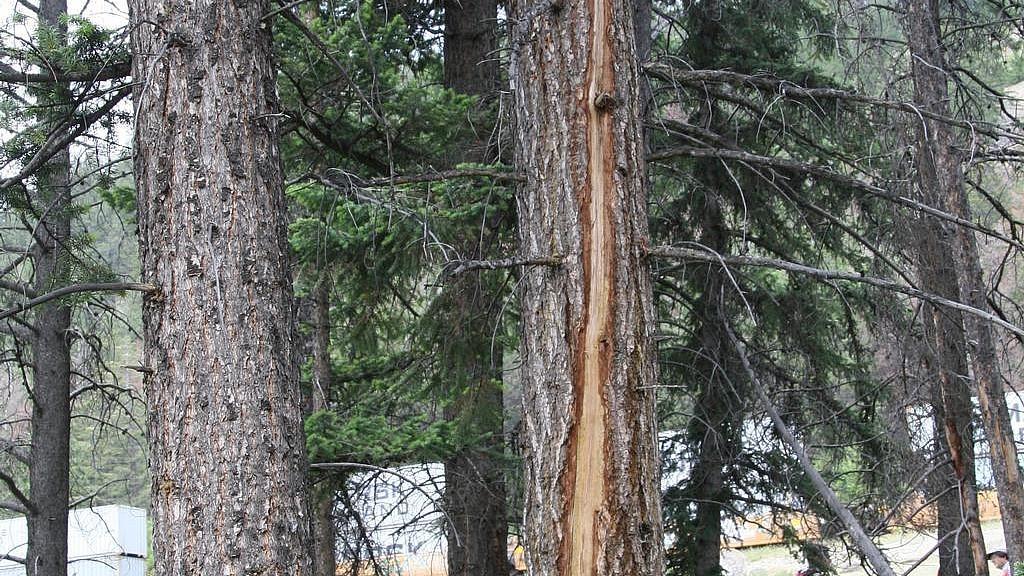When lightning hits a tree, water in the cells beneath the bark is heated past the boiling point. The resulting steam causes an explosion that removes strips of bark.
Lightning strikes
- A crack in the bark appears when a continuous groove of bark is striped along the entire length of the trunk or main branch.
- A crack that does not run the length of the trunk may indicate a side flash. A side flash occurs when electricity strikes the tree, travels down the trunk, then jumps to an object with less electrical resistance.
- If lightning strikes a bit deeper, the entire tree may blow apart. The tree may or may not have blackened or charred areas on the trunk.
- In some cases, the internal wood or root system may be burned without obvious external symptoms.
- The wide range of damage is related to the variability of factors such as the intensity of the strike, moisture content on and in the tree, and the type and structure of the tree.
Management
- If possible, wait a full growing season to determine the extent of damage caused by a lightning strike.
- Soon after the strike prune any damaged branches. Hire an arborist to prune if the tree is large, hazardous, or located near powerlines.
- If the cambium layer (cell layer where tree growth occurs) beneath is still moist, loose bark may be tacked in place and temporarily covered with burlap or plastic. Otherwise, remove loose bark, water as needed, and wait to determine that the tree will survive before investing in major repairs if the tree does pose a hazard.
- Consult with an arborist if the tree is a valuable specimen tree, or as a result of the lightning strike, it has become a hazard to people or property.
